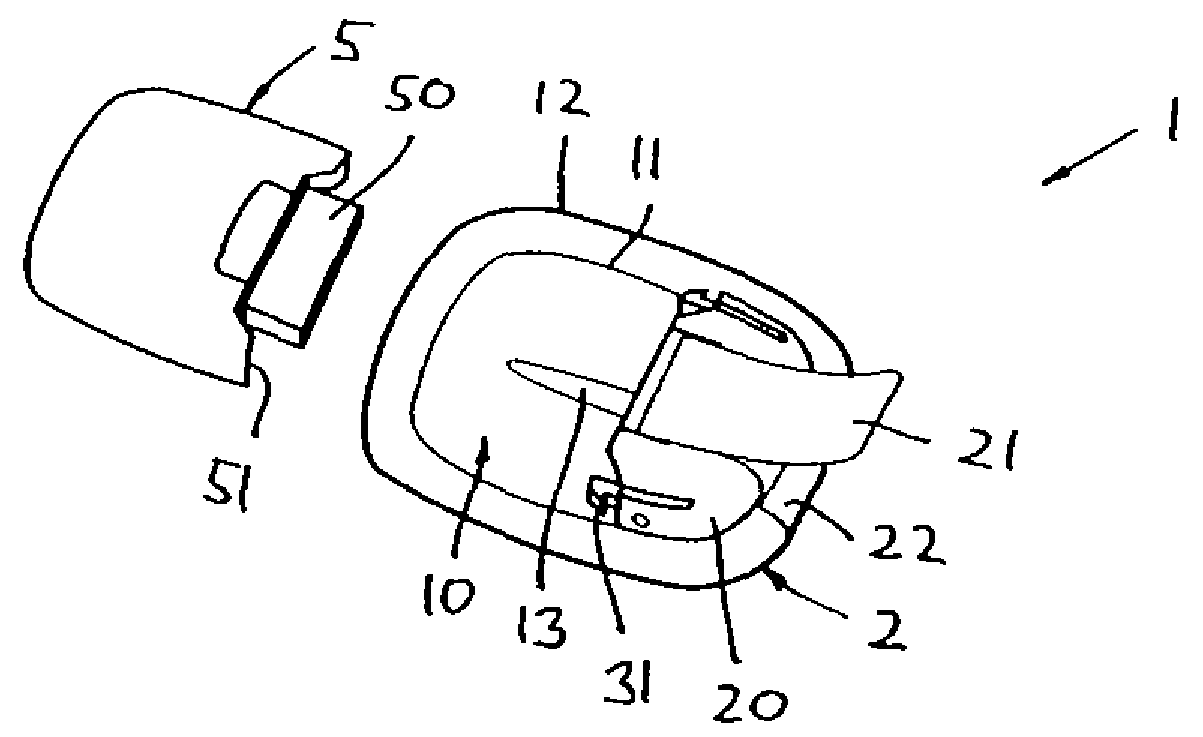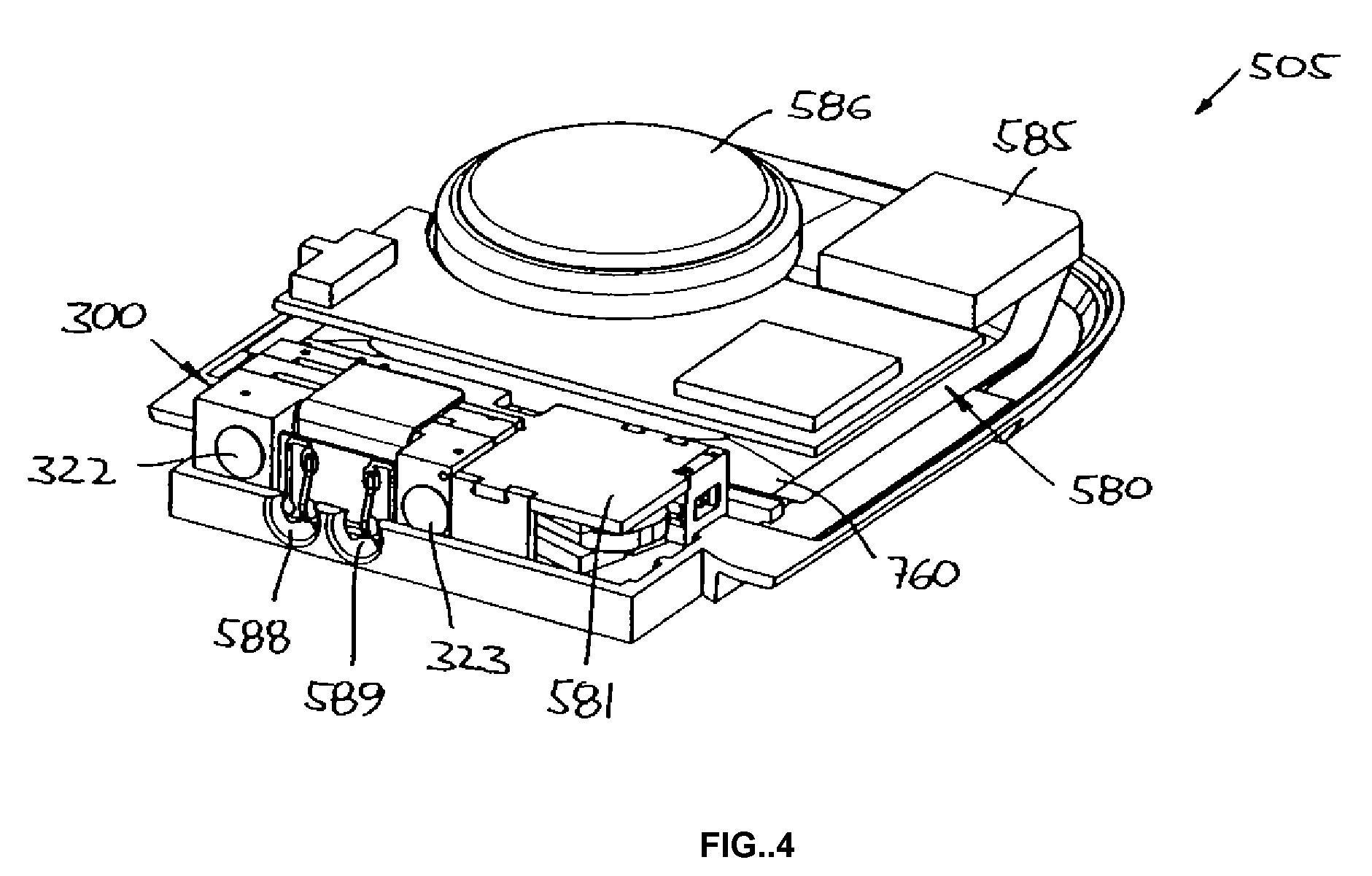Securing Pairing of Electronic Devices
a technology of electronic devices and pairing, applied in the field of secure pairing of electronic devices, can solve problems such as difficult operation, and achieve the effect of enhancing safety against incorrect pairing and high degree of safety
- Summary
- Abstract
- Description
- Claims
- Application Information
AI Technical Summary
Benefits of technology
Problems solved by technology
Method used
Image
Examples
example 1a
[0053]The local unit and the remote unit is provided with mating mechanical coupling means 105, 205 adapted to provide engagement in which the local sensor and the remote sensor detect that the local unit and the remote unit have been arranged in a mating relationship with each other at substantially the same time. The coupling is preferably of the “click” type in which the two units are “dragged” together during the final travel of engagement, e.g. when the pump unit is inserted into the docking cavity as shown in FIG. 6B. In case the pump unit is “dormant” it will need time to power-up before it can transmit the unique identification code embedded in the local processor. When power-up has taken place the pump unit will automatically start to transmit the code one or more times during a pre-specified interval, i.e. a transmission window. The control unit will be programmed to wait until the power-up has taken place before it will open a receiving window of a predetermined length. F...
example 1b
[0054]As a variation of example 1A, the disengagement of the two units may be used to start the transmission and listening windows. Indeed, this would require the use of stronger transmission signals.
example 2
[0055]The local sensor and the remote sensor are also adapted to detect that the two units are no longer arranged in a mating relationship with each other, this allowing the units to detect the time in which they were engaged. Thus, when the two units are connected the remote unit starts to “listen” and the pump unit, after having been powered-up, starts to transmit the first of a coded sequence, e.g. “abxyz1” wherein “ab” indicates a code identifying a pump unit of a proper type, “xyz” is a unique code identifying the actual pump unit, and “1” indicates that this is the first of a series of signals. In case the unique pump code “xyz” has been exchanged during a previous pairing process, e.g. as in example 1, this portion of the code may be dispensed with. When the remote unit starts to listen, it will only accept the 1-coded sequence this preventing cross-talk with other pump units activated slightly earlier. When the 1-code is received it is returned to the pump unit as a “cdxyz1”...
PUM
 Login to View More
Login to View More Abstract
Description
Claims
Application Information
 Login to View More
Login to View More - R&D
- Intellectual Property
- Life Sciences
- Materials
- Tech Scout
- Unparalleled Data Quality
- Higher Quality Content
- 60% Fewer Hallucinations
Browse by: Latest US Patents, China's latest patents, Technical Efficacy Thesaurus, Application Domain, Technology Topic, Popular Technical Reports.
© 2025 PatSnap. All rights reserved.Legal|Privacy policy|Modern Slavery Act Transparency Statement|Sitemap|About US| Contact US: help@patsnap.com



